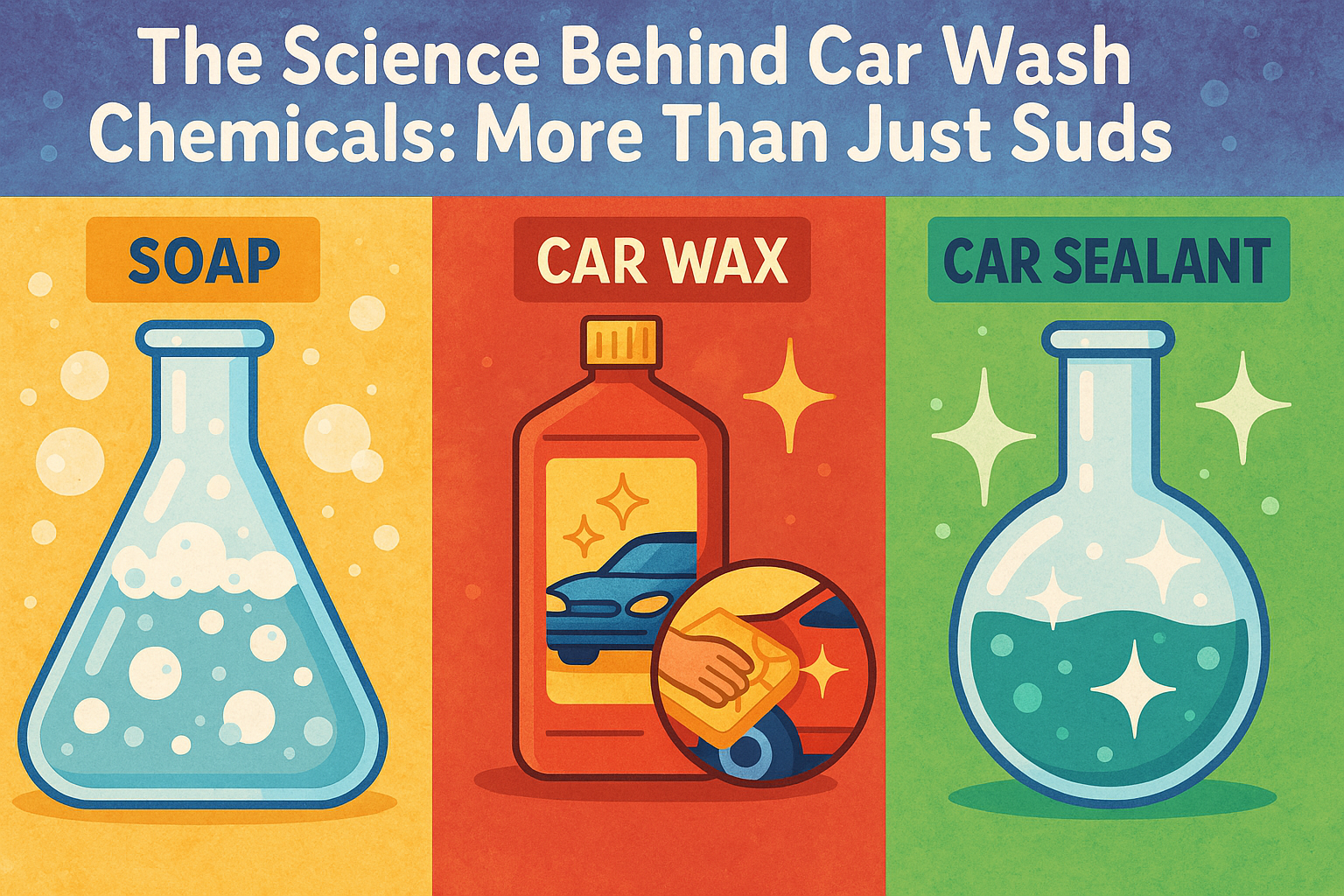We all love that satisfying feeling of driving away in a sparkling clean car. But have you ever stopped to think about what exactly is making that shine happen? It’s not just water – it’s a carefully formulated cocktail of chemicals working together at a microscopic level. Understanding the science behind these car wash products can not only help you appreciate the process but also make informed choices for keeping your vehicle looking its best.
Let’s dive into the key players in your car wash experience.
The Power of Soap: Breaking Down the Grime
Car wash soaps aren’t like your everyday hand soap. They are specifically designed to tackle the tough grime, dirt, and road film that clings stubbornly to your car’s surface. The secret lies in their surfactants1.
- What they do: Surfactants are molecules with a unique dual nature. One end is attracted to water (hydrophilic), while the other is attracted to oil and grease (hydrophobic). This allows the soap to lift and surround the oily dirt particles on your car, effectively breaking their bond with the paint. When the water rinses away, these encapsulated dirt particles go with it.
Did You Know?
The pH balance of car wash soap is crucial. A pH-neutral soap is generally recommended as it’s effective at cleaning without stripping away existing wax or sealant layers.
Wax On, Shine On: Protection and Gloss
After the dirt is gone, the next step often involves waxing. Car wax isn’t just about making your car look shiny; it provides a crucial layer of protection.
- What it does: Traditional car waxes, often made from natural or synthetic waxes like carnauba, create a smooth, hydrophobic (water-repelling) barrier on the paint’s surface. This barrier helps to:
- Enhance shine: By creating a uniform and smooth surface, light reflects evenly, resulting in that desirable glossy look.
- Protect the paint: The wax layer acts as a shield against environmental contaminants like bird droppings, tree sap, and UV rays that can damage the clear coat over time.
- Make future washing easier: The slick surface prevents dirt from adhering strongly, making subsequent washes more effective.
Seal the Deal: Long-Lasting Defense
Car sealants are a more modern alternative or addition to traditional waxes, often offering longer-lasting protection.
- What they do: Typically made from synthetic polymers, sealants form a durable, chemical bond with the paint surface. This results in:
- Extended protection: Sealants can last for several months, often outperforming traditional waxes in terms of longevity.
- Excellent water beading: They create a highly hydrophobic surface, causing water to bead up and roll off easily, reducing water spots.
- Resistance to harsh elements: Sealants often offer superior resistance to chemicals, UV radiation, and other environmental aggressors compared to some waxes.
Pro-Tip
For the best results, ensure your car’s surface is properly cleaned and dried before applying wax or sealant. Applying these products to a dirty surface will trap contaminants and hinder their effectiveness.
Understanding the science behind car wash chemicals empowers you to appreciate the intricate processes involved in achieving that showroom shine. From the dirt-busting action of surfactants to the protective embrace of waxes and sealants, each chemical plays a vital role in maintaining your car’s appearance and protecting its valuable paintwork. So, the next time you’re washing your car, remember the fascinating science at work beneath the suds!
- Surfactants are molecules with water-loving and oil-loving parts that reduce surface tension, helping liquids mix and clean by positioning at interfaces. They are classified by the charge of their water-loving head (anionic, cationic, nonionic, amphoteric) and are key in detergents, cosmetics, and industry. ↩︎


Leave a Reply